王波:流年里的吊脚楼存着老家
◇ 文|见习记者 胡 婷 图| 游 宇 受访者提供
王波:流年里的吊脚楼存着老家
◇ 文|见习记者 胡 婷 图| 游 宇 受访者提供
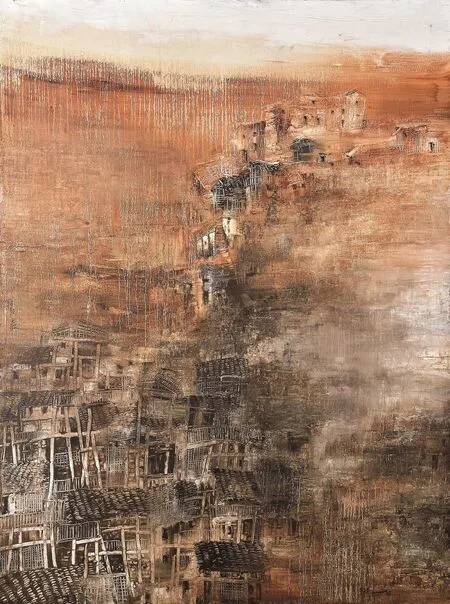
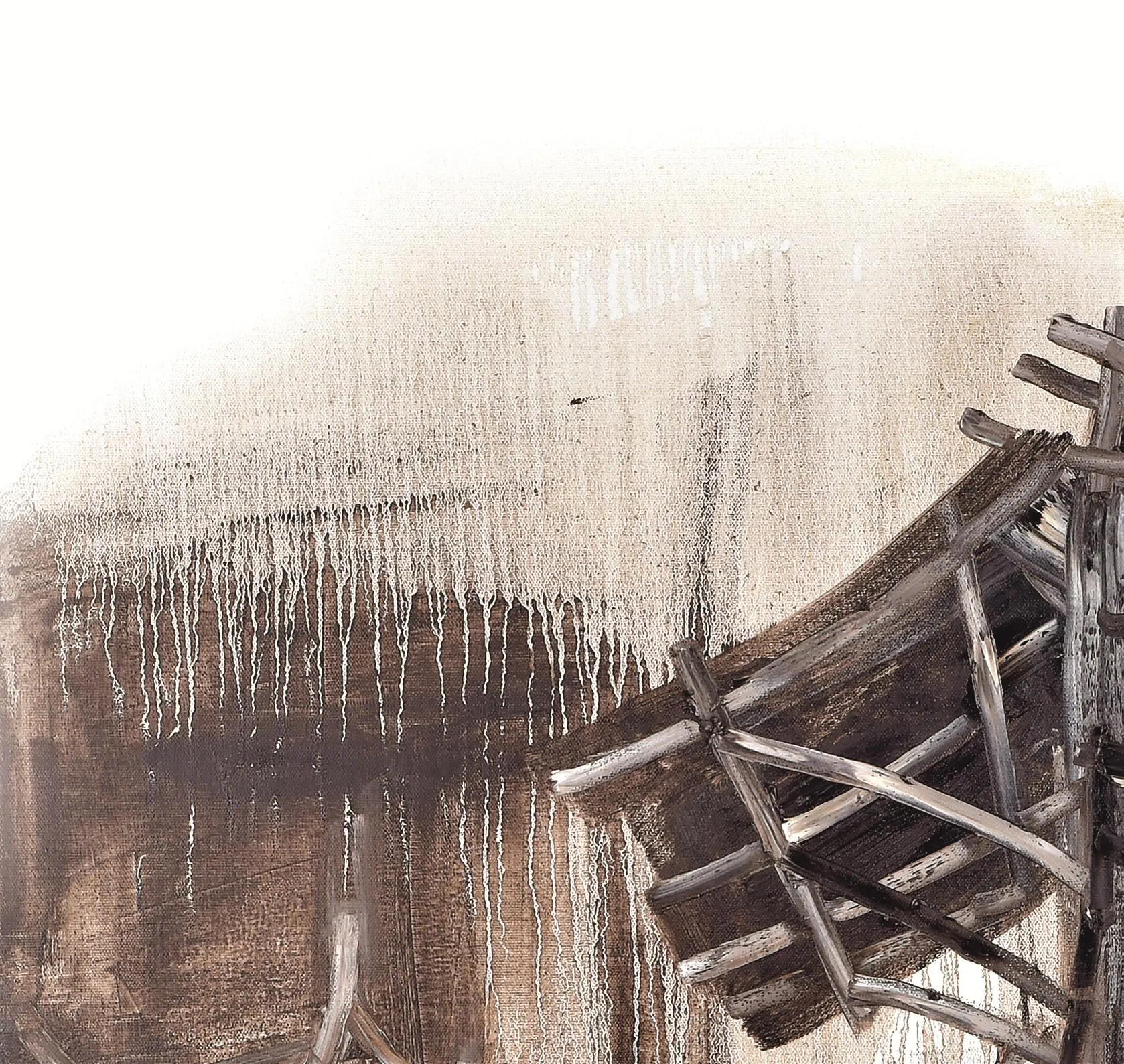
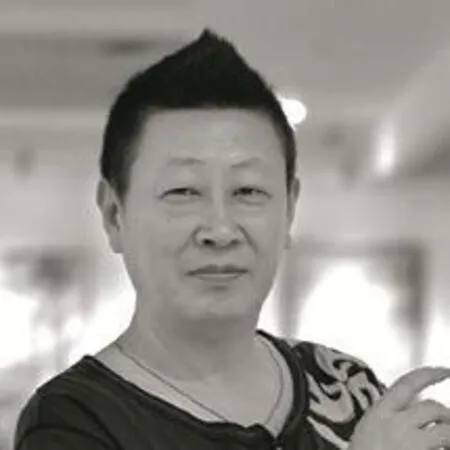
王波Wang Bo
1985年毕业于四川美术学院。1986年至1995年任教于西南大学美术学院,1996年后从事建筑、室内设计和环境艺术研究,自由艺术家。先后出版《王波作品案》《委内瑞拉——中国当代品油画艺术展》《向度与别望》《重现的风景——城市黄页》《方物亦非•重现的风景》《一门一世界》等。
Graduated from Sichuan Fine Arts Institute in 1962, Wang Bo is a freelance artist. He was once a teacher in School of Fine Arts, Southwest University from 1986 to 1995. In 1996, he devoted himself to architecture, interior design and environmental art. His masterpiece includes Wang Bo’s Works, Venezuela—Contemporary Chinese Oil Painting Exhibition,Returned Scenery—City Yellow Pages, Nothingness—Returned Scenery,etc.
如果让你想象一幅最有山城味道的画面,你会选择吊脚楼吗?或者,说到吊脚楼,你会否最先想到洪崖洞?
也许,于大多数人而言,吊脚楼最真实的记忆都已模糊。
十多年来,画家王波一直醉心于老山城的吊脚楼。在他的油画布上,黑褐色的调子中吐露着岁月的痕迹,偶尔淡淡的用色平添诗意,还原出山城青涩时光的线条与氛围。“所有的人都在背井离乡。”王波执着于吊脚楼,只因这些笔触将他带回童年,让他看清一颗赤子的心。
Will you regard stilted buildingsasa a symbol of Chongqing, or to mention stilted buildings, will Hongya Cave be right off the top of your head?
Perhaps most people’s impressions on stilted buliding are faded away.
For more than ten years, Wang has been keen on Chongqing’s stilted buildings. Dark brown lines on his canvas reveal wisdom of the ages, and occasional plain hues add poetic charm to Chongqing. “Everybody displaced from their homes.”Yet Wang persists in picturing stilted buildings, because these lines andhues remind him of his childhood.
吊脚楼里的烟火气
Harmony and Peace in Stilted Buildings
王波的油画大多以川东南、渝东南的古场镇建筑为主题,那里曾是盛极一时的古盐道,湖广填四川的移民节点。座落于此的古场镇依山傍水,错落有致,如同一个时间容器,盛满了码头文化和巴渝人生存迁徙的印记,也承载了王波对旧时回忆的不舍。
王波的老家在泸州,孩提时代,他住在老院子里。那个时候有老城墙,堂屋,小胡同,磨得光溜溜的青石板路。老人们最喜欢摆张竹椅,在院门口喝茶,抽烟,摆龙门阵。
1981年,王波到重庆求学。写生的时光里,他走过了菜园坝、千厮门、朝天门、十八梯……画了数不清的山城街巷,依山而建的吊脚群楼,记录了老重庆的生活。
“那时候,在菜园坝火车站旁的山坡上,可以看到重庆最大最集中的吊脚群楼,漫山遍野层层叠叠。在山坡上走着,一不小心还会踩到别人家的房顶。我在那种‘江景房’里待过几个晚上,感受过半开放式的邻里温情,特别是做饭时间,锅碗瓢盆声伴着百家宴的香味,环绕穿梭在不同形状的房间里……”回忆起这些生活片段,王波如数家珍,饶有兴致。

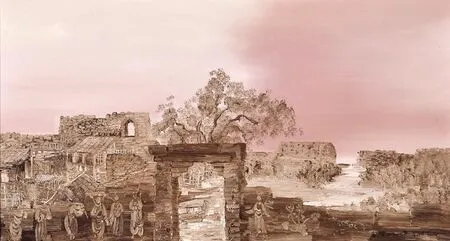
Most of Wang’s canvases are themed with ancient town architecture in southeast of Sichuan and Chongqing, where then they were ancient salt road and immigration spot from Hubei and Hunan to Sichuan. The ancient town is situated beside a river at the foot of mountains with proper distribution. It not only manifests culture of piers, the life and immigration of Chongqing citizens, but also records Wang’s memories of his past life.
In Wang’s childhood, he lived in his hometown in Luzhou, Sichuan. There were old city walls, central room, small alleys, and smooth flagstones. Sitting in bamboo chair, the aged preferred to drinking tea, smoking, and chatting with their neighbors.
In 1981, Wang pursued his studies in Chongqing. In his painting career, he has painted numerous streets, lanes, stilted buildings built down the hillsides, and also paintedold chongqing’s peaceful life.
At that time, standing on the hillside near Chongqing Railway Station, one could overlook the largest stilted buildings built tiers upon tiers. You might accidentally step on someone’s roofs when walking on the hillside. “I have lived in that kind of ‘river-view room’ for several days, and experienced half-open neighborhood friendship, especially the melody of pots and pans that had accompanied enticing smells drifting in rooms of different shapes…” Wang takes delight in recalling these harmonious lives.
在童年里沉淀的心
Childhood Experience Strengthens Faiths
上世纪80年代末期,城里的吊脚楼有的开始消失,旧的生活开始消逝。王波的生活轨迹,也曾一度偏离艺术的轨道。1985年,从四川美术学院毕业后,他做了九年的大学教师,随后又下海经商十年,一路遭遇失落和焦虑。“静下来时回放人生,记忆在多次重叠中慢慢清晰,关掉现实繁华浮躁的大门,开启通往虚空孤寂那扇窗,最后定格在自己既熟悉亲切又遥远模糊的绘画上。”2015年,他决定重拾画笔,背上画具游走在残存的古镇老街中。为了维持生计,他开过装饰公司,办过画廊,经营过饭馆茶楼。
而这一段路,他再没有丢弃手中的画笔。
“今天,仿佛所有的人都背井离乡,无论是地图上,语言上,还是时空上。所以,我喜欢在画布上做一次回溯,哪怕仅仅是想象中的乡愁。当我拿起画笔,发觉惟一能做的,也许就是记录。我会把这个系列一直画下去。”与其说这是王波的一种心愿,不如说更是一种态度。
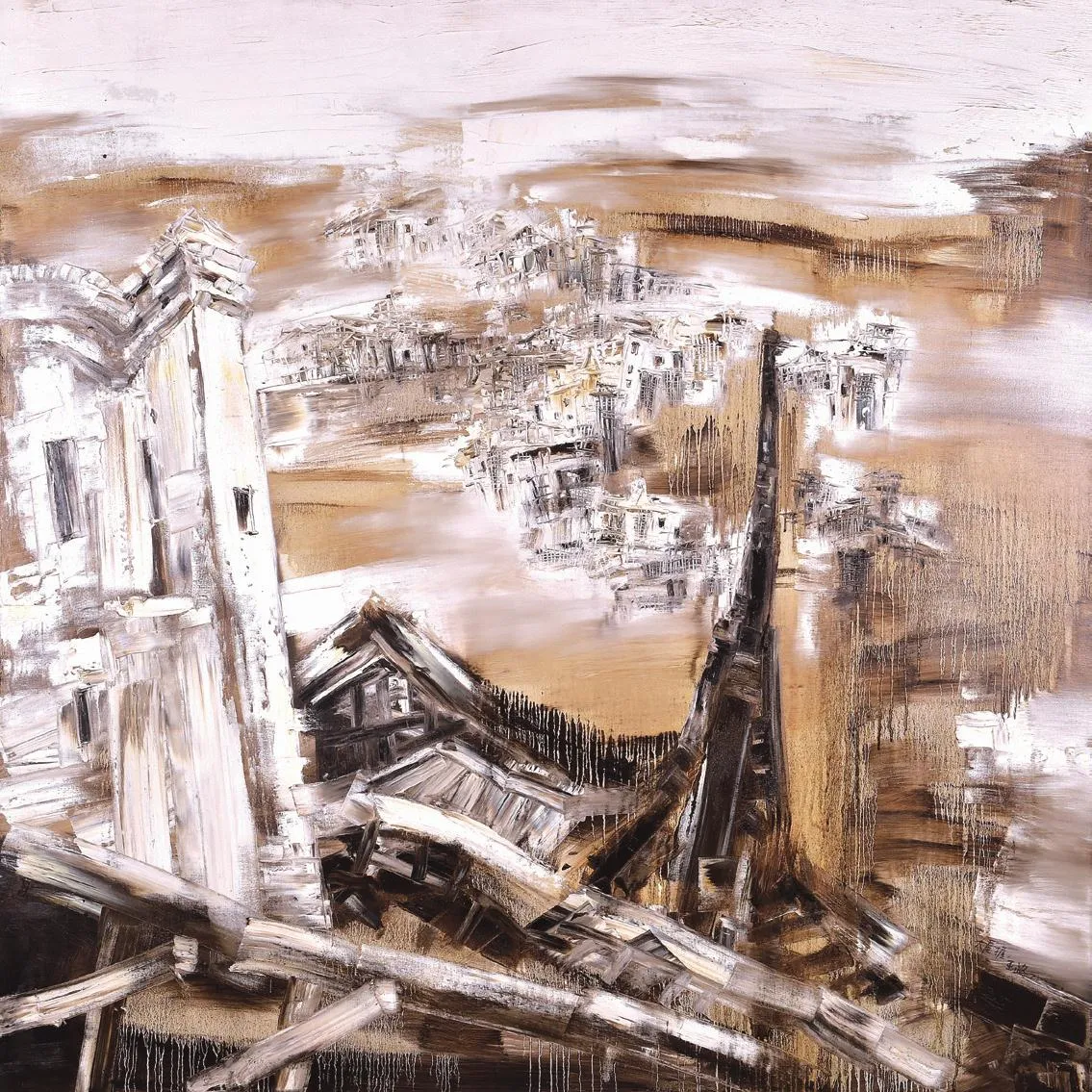
At the end of 1980s, some of stilted buildings began to disappear, thereupon old life gradually vanished. Wang was also deviated from artistic courses. In 1985, he has been a college teacher for ten years after graduation. Then he ventured into business, yet occasional frastrations and worries came to bother him . “Calm down and recall my life, my memories become vivid after several overlaps. Giving up on flourishing and restless life, I finally focused on the familiar yet backward painting skill.”In 2015, Wang decided to resume his art career, and packed up again his painting kit wandering in the streets of ancient town. He has been engaged in decoration company, gallery, restaurant and teahouse in order to make a living.
From then on, he has never quit his profession.

“It seems that many people today have displaced from their homes whether physically or mentally. I feel like having a retrospection on canvases, even it is just nostalgia of my imagination. When I pick up a brush, the only thing I could do is to paint. I would keep on picturing this series.” It was more of an attitude than a hope to him.
编织自己的精神通道
Pave His Own Spiritual Courses
事实上,除了几幅偏向写实的描绘外,王波的画大部分都充满梦幻与诗意,对生命情感流逝的感怀。有评论说,王波的这些画里透露着温暖,这使得画面超越了普通意义上的自然风光,呈现了已经消失和逐渐消失的古场镇,饱含着城市进化的精神命运。
从他画里那一片片看似摇摇欲坠却又互为依靠的老房子里,我们看到穿斗结构使得市井生活连绵不断,想象着邻里乡亲正在讲述祖辈的恩恩怨怨与悲欢离合。这些并不是完全复刻的吊脚楼,而是经由他的情感再现的产物。既有真实的痕迹,又展现了他设想的精神生命寓居之所。
“我想用画笔重新编织一条属于自己的精神通道,在画布上找回我们的精神家园。”王波试图通过解读古老民居的密码,重构记忆里的生态。在他的世界里有一个“场”,这个“场”里有童年的老街,学生时代的吊脚楼,温暖的人……一切他曾熟悉的事物,以及对画画单纯的热爱。
他开始习惯于在这个“场”中吸取能量。

In fact, except for several realistic paintings, most of Wang’s paintings are filled with fantacy, poetry, and his reflections of life and sentiments. Wang’s paintings, the destiny of urban evolution, are more than ordinary natural landscapes.
In his paintings, those interdependent houses are seemingly on the verge of collapse. We can see the building structure forms a continuous daily life, from which we can picture these neiborhoods are sharing happiness and sorrow of their forefathers. All these stilted buildings are not only productions of his reflection, but also his ideal place for spiritual life.
“I want to redraw my own spiritual course and find our spiritual home in canvases.” Wang tries to reconstruct ecological environment in his memory by exploring ancient buildings. There is a “place”in his world, where he is familiar with all the things and holds his pure interest in painting.
He begins to get used to absorbing energy from this “place”.
Wang Bo:Stilted Buildings in Fleeting Time, Containers of Memories
Article | Hu Ting Pictures | You Yu Interviewee


